Introduction
In the ever-evolving world of interior design, color trends come and go, but the timeless appeal of certain hues remains constant. One such color making a significant resurgence is golden beige. This variant of beige, with its warm and luxurious undertones, is gradually replacing cooler shades, infusing interiors with a sense of calm, sophistication, and elegance. This article delves into the rise of golden beige in modern interior design, tracing its historical roots, its influence from minimalism and Scandinavian design, and its psychological implications. We will also explore how this versatile color can be incorporated into different interior styles, enhancing their aesthetic appeal.
The Emergence of Golden Beige in Modern Interior Design
Beige, particularly the golden variant, is making a significant comeback in the world of interior design. The trend is shifting away from cooler shades like gray, and warmth is being reintroduced through colors like golden beige. This trend is not yet the go-to, but it's gaining momentum and is expected to be fully embraced within the next 12-18 months. However, not every type of beige will be popular. The upcoming trend is about choosing modern versions of beige that update home finishes rather than backdate them.
Historical Context of Golden Beige
The term 'beige' was first used as a color term by the French around 1855–60. It was later adopted into English in 1887. Beige, described as a pale sandy fawn color, a grayish tan, a light-grayish yellowish brown, or a pale to grayish yellow, is derived from natural wool that has not been dyed or bleached. It has been used to describe various light shades chosen for their neutral or pale warmth appearance. The emergence of 'Golden Beige' as a popular color in modern interior design can be traced back to these historical roots.
Influence of Minimalism and Scandinavian Design
Scandinavian minimalism, a design philosophy born out of necessity, has significantly influenced modern interior design. This aesthetic, characterized by simplicity, functionality, and calmness, was born from the harsh Nordic winters, necessitating functional structures that could withstand severe conditions. The design philosophy focuses on reducing what is unnecessary to leave what is essential, leading to a preference for sustainability and simplicity. Quality craftsmanship, functional spaces, tranquillity, and simple decor are key components of this design style. This philosophy has shaped the aesthetic of golden beige in modern interior design, emphasizing its minimalistic and calming attributes.
Golden Beige: Aesthetic and Psychological Implications
Golden Beige, a variant of beige, carries the same psychological implications as its base color. It's dependable, conservative, and flexible, offering a neutral, calm, and relaxing ambiance. Symbolically, it brings a sense of energy and strength, signifying intellectual abilities, wisdom, and ethical behavior. It's associated with planning and constructive action, channeling energy and inspiration into productive areas. Golden Beige, with its warm and luxurious hue, also suggests a desire for comfort, neutrality, and perhaps conformity. It's often used in interior design for its ability to create a comfortable, relaxing environment while providing a touch of elegance and sophistication.
The Color Psychology of Golden Beige
Golden beige, a more intense version of gold, signifies joy, wisdom, and value. It's associated with success, achievement, and triumph, often linked to wealth, luxury, and sophistication. The psychology of golden beige implies opulence, material wealth, and extravagance. This color is generous and giving, compassionate and loving, sharing its wisdom, knowledge, and wealth with others. However, an excess of golden beige can lead to arrogance and cunning in the pursuit of power and influence. It's important to balance its use to avoid negative implications.
Golden Beige and the Luxury Aesthetic
The luxury aesthetic associated with golden beige can be exemplified by a Victorian-inspired living room set. With its intricate wood carvings, detailed crown carving, and golden beige color, it enhances the beauty of any living room décor. The luxurious accent pillows and floral upholstery, coupled with the golden beige color, add to the royal comfort and style quotient. The coffee table, carved elaborately, showcases the luxurious and unique features of golden beige. This set is a testament to the dramatic traditional style and uncompromising comfort that golden beige brings to your home.
Incorporating Golden Beige into Different Interior Styles
Golden beige is a versatile color that can be incorporated into various interior styles. In minimalist interiors, it can serve as a warm backdrop, adding depth and warmth without overwhelming the space. For a bohemian look, golden beige can be layered with different textures and tones, creating a rich, eclectic feel. In contemporary interiors, golden beige can be paired with cooler neutrals or accented with gold for a chic, modern look. Whether you're looking to warm up a white room, add texture, or create a beige-toned anchor piece, golden beige offers endless possibilities.
Golden Beige in Minimalist Interiors
Minimalist interiors often leverage the subtlety of golden beige to create a serene and uncluttered environment. The color's warmth and neutrality make it a perfect backdrop, allowing the focus to be on the simplicity of the design. The use of beige-toned stone and wood slats further illustrates how golden beige can be incorporated into minimalist interiors. This color, when paired with varying textures and natural materials, adds depth and interest to the minimalist design.
Golden Beige in Bohemian Interiors
A boho living room is an indoor gathering space that combines decor pieces from around the world with natural elements and eclectic accents. The carefree, cozy aesthetic is slightly unconventional but welcoming and full of character. To incorporate golden beige into a boho interior, consider using it in a mix of textures, prints, and materials. It can be introduced through decorative pillows, throws, area rugs, or curtains woven from natural textiles. Golden beige can add a touch of luxury and warmth to the bohemian style, making the space feel more inviting and comfortable.
Golden Beige in Contemporary Interiors
Beige, particularly the golden variant, has been a top choice in contemporary interior design. Its warm hue and versatility make it a perfect match for various decor elements. Golden beige surfaces work well with white, light pink, pastel yellow, and other faded shades, giving interiors a warm and snug feel. It adorns contemporary-styled house interiors, complementing floors and surfaces. Pairing a blushing pink, white, or grey coloured couch with golden beige pillows can beautify the entire living lounge. The use of creamy beige marble on surfaces, decorative artifacts, shelves, and television cabinets is aspirational, offering a minimalistic, snug-looking living lounge.
Conclusion
Golden beige, with its historical roots and influence from minimalism and Scandinavian design, is making a significant comeback in modern interior design. Its psychological implications of dependability, calmness, and sophistication make it a preferred choice for creating a relaxing and elegant ambiance. The versatility of golden beige allows it to be incorporated into various interior styles, from minimalist to bohemian to contemporary, adding depth, warmth, and a touch of luxury. As we move forward, the golden beige trend is expected to gain momentum, offering endless possibilities for creating comfortable, stylish, and inviting spaces. The rise of golden beige signifies a shift towards warmth, comfort, and elegance in interior design, marking a new chapter in the color trends of the industry.







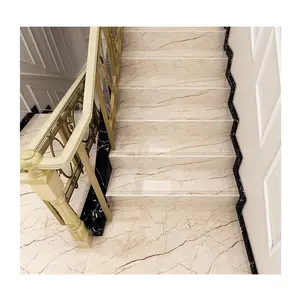



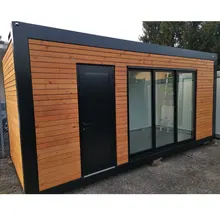



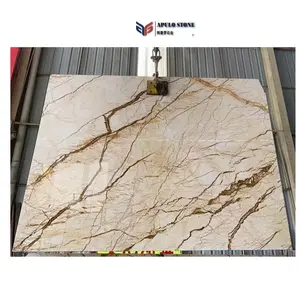

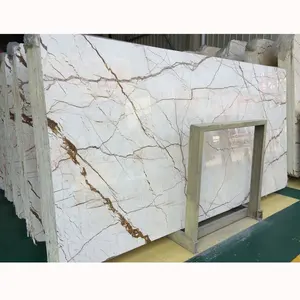
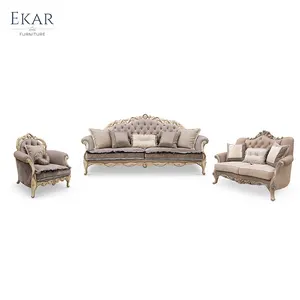
























 浙公网安备 33010002000092号
浙公网安备 33010002000092号 浙B2-20120091-4
浙B2-20120091-4